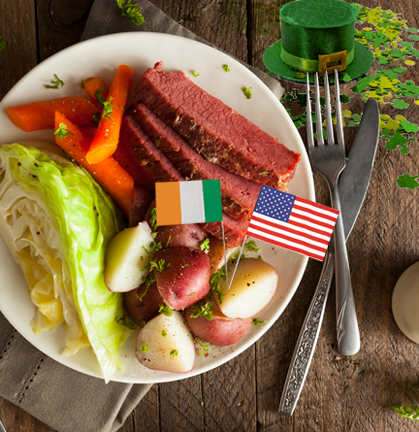St. Patrick’s Day may be the perfect lesson in marketing
 Today is St. Patrick’s Day. Hopefully you are wearing green,
eating corned beef and cabbage, listening to bagpipes played by men in tartan kilts,
sporting a four leaf clover in your lapel and are surrounded by green-clad
leprechauns. There is just one problem with all of this: it is not Irish, but
an American remake of a religious holiday in Ireland.
Today is St. Patrick’s Day. Hopefully you are wearing green,
eating corned beef and cabbage, listening to bagpipes played by men in tartan kilts,
sporting a four leaf clover in your lapel and are surrounded by green-clad
leprechauns. There is just one problem with all of this: it is not Irish, but
an American remake of a religious holiday in Ireland.
In Roman Catholicism, St. Patrick is the patron saint of
Ireland. He was a missionary who led to the conversion of the pagan residents of
the island to Christianity. He died on March 17, 461, thus the solemn day
commemorates his life with a modest feast. Since the day comes in the midst of
lent, it is a one-day reprieve from fasting during the holy season. However, it
was never the reveling day in Ireland it has become until the holiday was
Americanized. Here is a list of the American remake of St. Paddy’s Day.
- Wearing green had nothing to do with St. Patrick
or his day until it hit the shores of America. In fact, the Knights of St.
Patrick actually wear blue. Green was probably loosely associated with Ireland
being known as the Emerald Isle or with a rebellion against the British in
1798. A famous ballad was written about the Irish Revolution called "Wearing of
the Green.”
- Corned beef and cabbage is actually a Jewish
meal. In Ireland, St. Patrick’s Day was celebrated by eating pork and potatoes.
The Irish-Americans of the 18th century living in the urban areas of
the east coast found corned beef and cabbage in abundant supply and cheap, so
they substituted it for the traditional meal of bacon and Irish potatoes.
- Tartan kilts and bagpipes are actually a
Scottish thing. Ireland and Scotland are on neighboring islands. The Irish wear
kilts, but these are traditionally Saffron Kilts (solid mustard yellow).
- Shamrocks are three-leafed clovers that
represent the Trinity of God in Christianity. Four-leafed clovers may be lucky,
but are not shamrocks.
- Leprechauns have nothing to do with St. Patrick
or his feast day. They are from Scottish-Irish folklore. However, they are not
described wearing green in ancient Ireland, but red jackets.
What can you learn about marketing from St. Patrick’s Day? For
one thing, marketing defines a brand. People believe what you tell them in
marketing. What was a solemn religious day of commemoration was turned into a
day of merriment. The marketing redefined the day and told people what they
should wear, eat, and do in order to properly celebrate their Irish heritage. None
of it really had anything to do with Irish heritage, but people believed it
did.
The second marketing lesson is that symbolism is strong in
helping you define (or redefine) a brand. Simple images stick with us. Little
green men with red beards drinking pints and smoking pipes have come to be a
symbol of St. Patrick’s Day even though they have nothing to do with the patron
saint. Somewhere along the line, someone created an image that stuck to the
event.
The third lesson to learn is that when you are building a
marketing campaign, not all things have to line up to be effective. The
American version of what has become an Irish-heritage celebration actually
borrows from several cultures outside of Ireland. It also includes people who
have absolutely no Irish roots. It doesn’t matter. It sells, which is the
bottom line of any marketing campaign. The idea is to cast the net wide and involve
as many people as possible.
If you are building a brand, consider St. Patrick’s Day.
Irish or not, my guess is you are wearing green today… everyone is. One thing
is clear: marketing works.